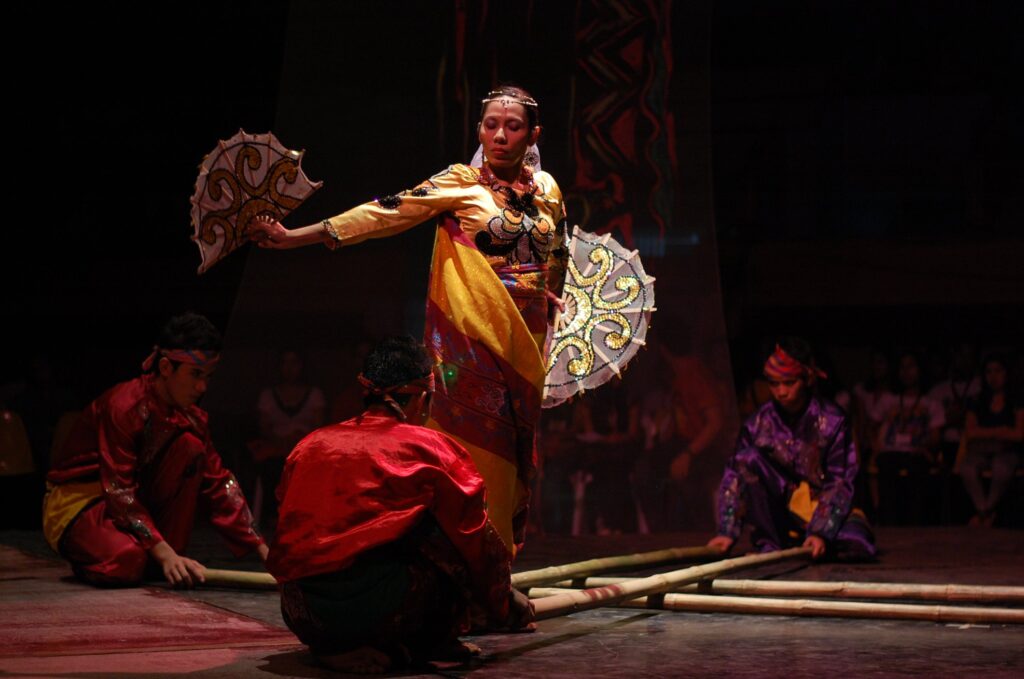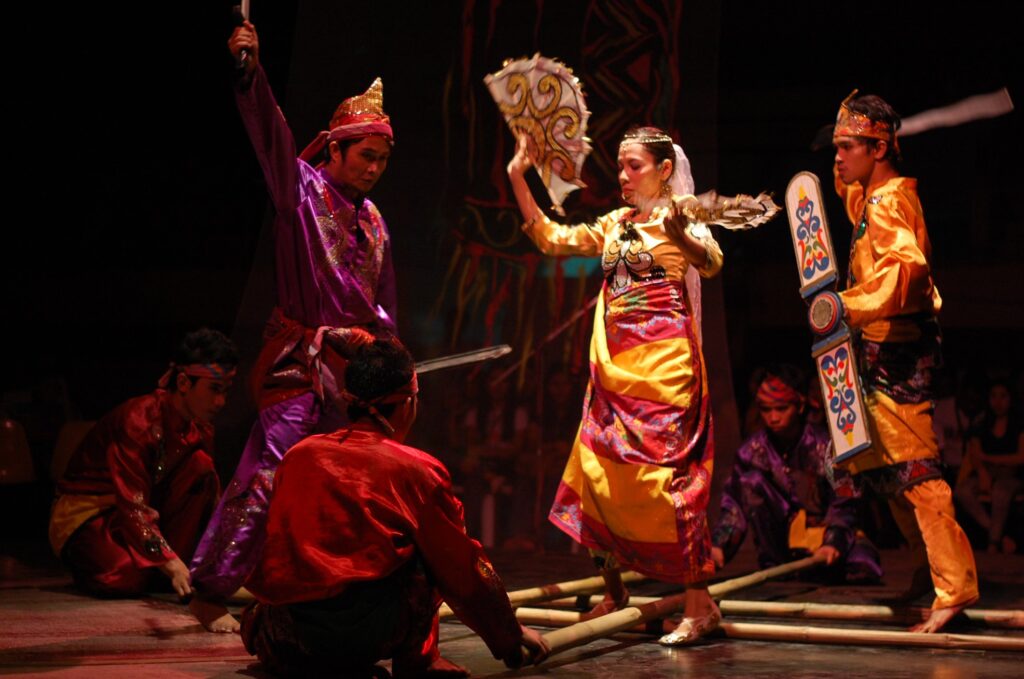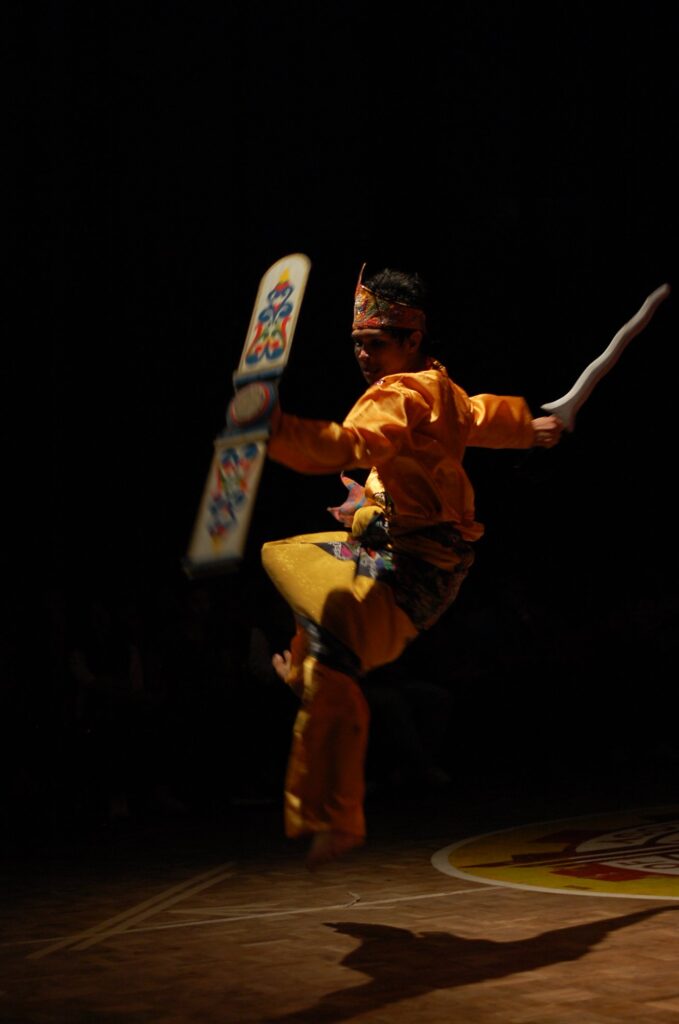
Singkil is a dance by “mga raga” or young women in Lanao. This dance form was popularized by the Bayanihan National Dance Company (then known as the Bayanihan Folk Dance Group) during a World Trade Exhibit in New York in 1958.
The venerable Princess Tarhata Alonto Lucman, now 94, taught the dance to the late National Artist for Dance, Lucrecia Reyes“Mommy” Urtula when she was in Marawi for the MSU Darangan Cultural Dance Company under its Artistic Director Henrietta Eli.
Some say the Maranao Singkil dance form originated in India, which, in our opinion, needs to be probed for there is a long line of dance traditions that have influenced many dances today in the world, particularly those around Asia.
Mindanao may have been touched by this cusp of Hindu influence for some of Mindanao dances show similar movements such as the pangalay. But then, there is a need to do research to such claims.
Watching a performance of Singkil is an authentic experience for the viewer of this recreated dance form which, in turn, could have been authentically apprehended from its source. The creative expressions of any culture are embedded in its own metanarratives expressing that culture’s beliefs, values or, its total way of life, according to IPAG Artistic Director Steve Fernandez.
In the Lanao area, during enthronements or other important occasions, an onor dances the Singkil with so much skill that we see her with apir (fans) aloft and maintaining a formal mein, weaves in and out of clashing bamboos forwards and backwards — yes, her back towards the bamboo poles with only covert glances at the clapping of two or more pairs of bamboo poles on the floor.
The clashes of bamboos in the dance is also said to imitate the shaking of the earth during an earthquake that frightened the young woman, later identified as Gandingan, one of the wives of Darangen epic hero Bantogen.
If one reads the epic darangen, one wonders what Gandingan, if indeed the young woman is Gandingan, was doing in the forest during an earthquake? This, perhaps, we surmise, is one more variant to the story about Gandingan given the creativity of a chanter.
A popular version in the Darangen series published by the Mindanao State University tells us that Bantogen discovered her alone on top of a boulder in the forest. The tonongs (spirits) had connived to bring Bantogen to where she was so he could take her to his kingdom.
The Singkil as dance form is used to frame narratives. In the posts here, the MSU-Iligan Institute of Technology’s Resident Theatre Company Integrated Performing Arts Guild (IPAG) uses the Singkil as dance form but the narrative is the fight between Bantogen and his archenemy Salindagaw over the Bai Lawanen.
The story is a skilful interplay of the rhythm of the clicking of the bamboo poles and the ubiquitous malong (rectangular woven cloth) manipulated by the dama (lady attendants) with their apir (fans) as backdrop. The warriors provide the rhythms with the poles and their kampilans (swords). The scene ends in a kalilang (celebration). This is based on an episode from the epic Darangen “The Abduction of Arkat-a-Lawanen”, one of the most lyrical episodes of the epic.

On the other hand, Fernandez in his book, Representation Meaning & Identity (2018) says forms are expressions, mirrors of culture. He says:
Mindanao cultural communities settle as contiguous clusters. One community resides beside the other. One influences the other, their practices and values overlapping the others’. Overlapping cultures continuously create cross breeds, and cultures constantly evolving through time and space. Islam influences indigenous values as indigenous practice influences the practice of Islam. Cosmopolitan centers bring new practices to traditional folk settler communities. Liberal access to media and technology changes outlooks. In all these, culture cannot be static.
The Singkil therefore as one of the creative expressions of the Maranao strengthens Maranao culture especially in the use of traditional colors and motifs during the performance. The dance form has been interpreted by numerous dance companies around the country and we suspect, most have not even heard of the epic Darangen.
Fernandez and I agree that choreographers must be knowledgeable and honest in their apprehension of dances from our folk.
One more thing against misinformation. Tourism brochures should be accurate in their information – the one I found on this “It’s More Fun in the Philippines” brochure must be revised. It mentions a “distraught Princess Gandingan” and it tells us there are ‘fairies’ or ‘nymphs’ in Lanao. Well, this is news to me.
And why should many label the Singkil a “Royal dance”? This must explain why in some interpretations the lead dancer wears on her head a replica of the Sarimanok, symbol of wealth and prestige.
In any case, after the dance was lauded during its performances in New York over 60 years ago, the Singkil is deemed a prestigious dance form and has become well worth the imitation, often making the dance form a finale in dance concerts, in the same manner that the wedding dress concludes a Fashion show.

One more bit of information we have gathered on the staging of the Singkil in New York: the dance company could not take the heavy conveyor to ferry unto the stage the ‘princess’. Bamboo poles were used instead, hence, bamboo poles have been used since to bring her onstage when the Singkil is performed as contemporary dance.
How all this came about must be an interpretation that the lead dancer is a ‘princess’. Filipinos who are not familiar with the dance form feel pride in believing that the country has a “royal dance” after all.
But dance scholar Ligaya Fernando Amilbangsa however had always vehemently said the country has no ‘royal dance’ nor a “Muslim dance”.
One thing is certain of course, the performance of the dance form Singkil brings joy to any audience for its exciting narrative, movements and colors.
Here is MSU-IIT IPAG’s use of the dance form Singkil re-interpreting an episode of the epic Darangen’s “The Abduction of Arkat-a-Lawanen”.
Direction/Score: Steven PC Fernandez. Inspired by the Darangen.
Music adapted from Maranao Music
Choreography: Adapted from the traditional Singkil and Panggapir by Nolly Ceballos and the IPAG Creative Collective
Photos: Ronald Allan S. Salazar
comments are temporarily disabled.














